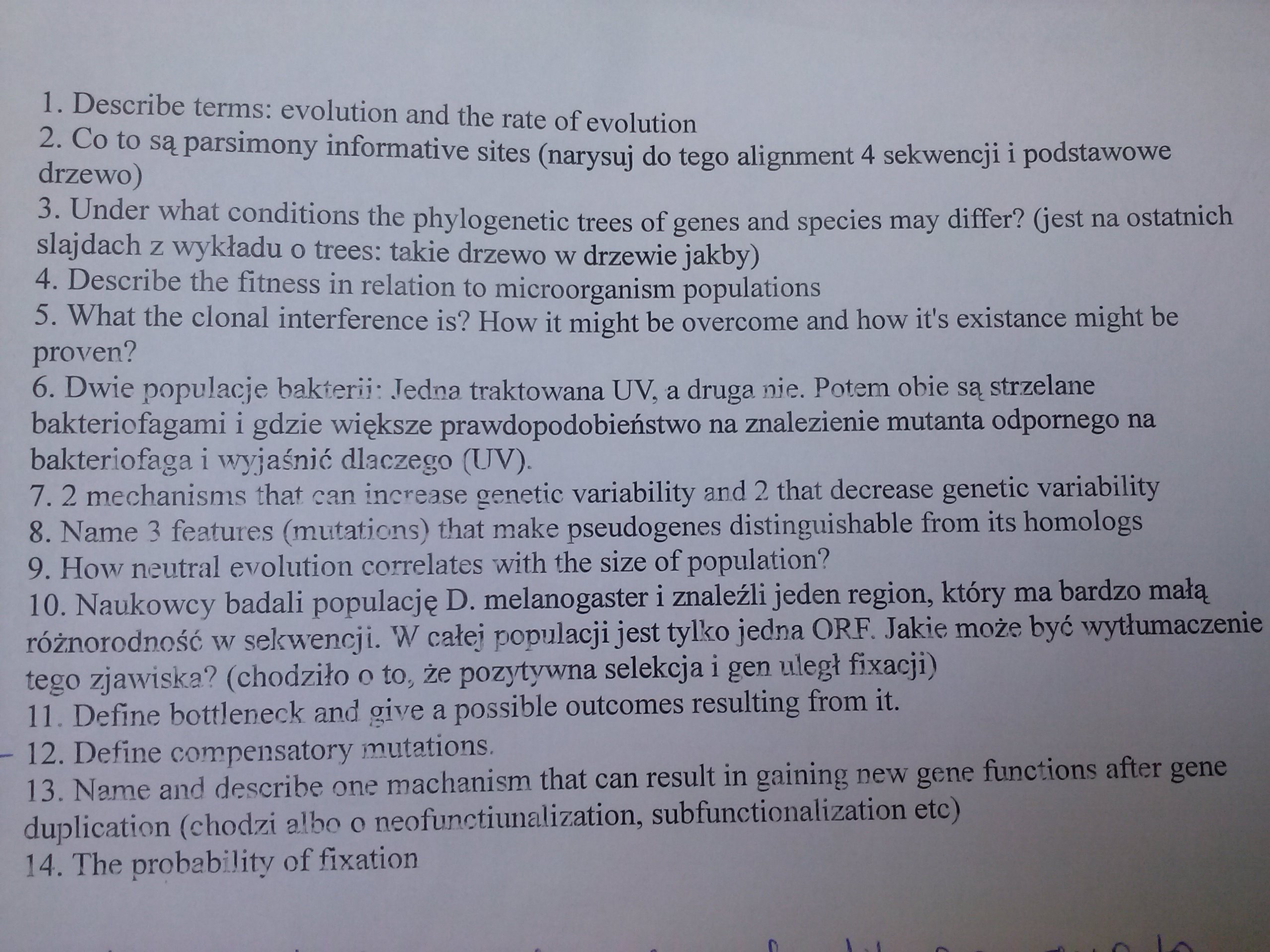CAM00104

1. Describe terms: evolution and the ratę of evolution
2. Co to sąparsimony informative sites (narysuj do tego alignment 4 sekwencji i podstawowe drzewo)
3. Under what conditions the phylogenetic trees of genes and species may differ? (jest na ostatnich slajdach z wykładu o trees: takie drzewo w drzewie jakby)
4. Describe the fitness in relation to microorganism populations
5. What the clonal interference is? How it might be overcome and how it's existance might be proven?
6. Dwie populacje bakterii: Jedna traktowana UV, a druga nie. Potem obie są strzelane bakteriofagami i gdzie większe prawdopodobieństwo na znalezienie mutanta odpornego na bakteriofaga i wyjaśnić dlaczego (UV).
7. 2 mechanisms that can increase genetic variability and 2 that decrease genetic variability
8. Name 3 features (mutations) that make pseudogenes distinguishable from its homologs
9. How neutral evolution correlates with the size of population?
10. Naukowcy badali populację D. melanogaster i znaleźli jeden region, który ma bardzo małą różnorodność w sekwencji. W całej populacji jest tylko jedna ORF. Jakie może być wytłumaczenie tego zjawiska? (chodziło o to, że pozytywna selekcja i gen uległ fbtacji)
11. Define bottleneck and give a possible outcomes resulting ffom it.
12. Define compensatory mutations.
13. Name and describe one machanism that can result in gaining new gene functions after gene duplication (chodzi albo o neofunctiunalization, subfunctionalization etc)
14. The probability of fixation
Wyszukiwarka
Podobne podstrony:
CAM00105 1. Describe terms: evolution and the ratę of eyolution 2. &nb
70445 w01Q survive from the ioth century or later, and the fragments of wood attached to their rivet
9. Chemical kinetics - calculating the ratę constant of the reactions and the progress of elementary
62. C.64470 EXCHANGE ratę regimes and the stability of the intemational monetary s
str (94) ~n&PEXY AND PASSIVE £>Il ^1 beaker is rotatcd, the ratę of setting
37. A.72814 CAN capitalism survive ? : creative destruction and the futurę of the
96 United Nations — Treaty Series 1972 CONYENTION1 BETWEEN THE KINGDOM OF GREECE AND THE REPUBL
S5004011 2Coin and the representation of individual authority If the reladvely unranked Middle Iron
CRASP Published by the Perspektywy Education Foundation and the Conference of Rectors of Academ
więcej podobnych podstron